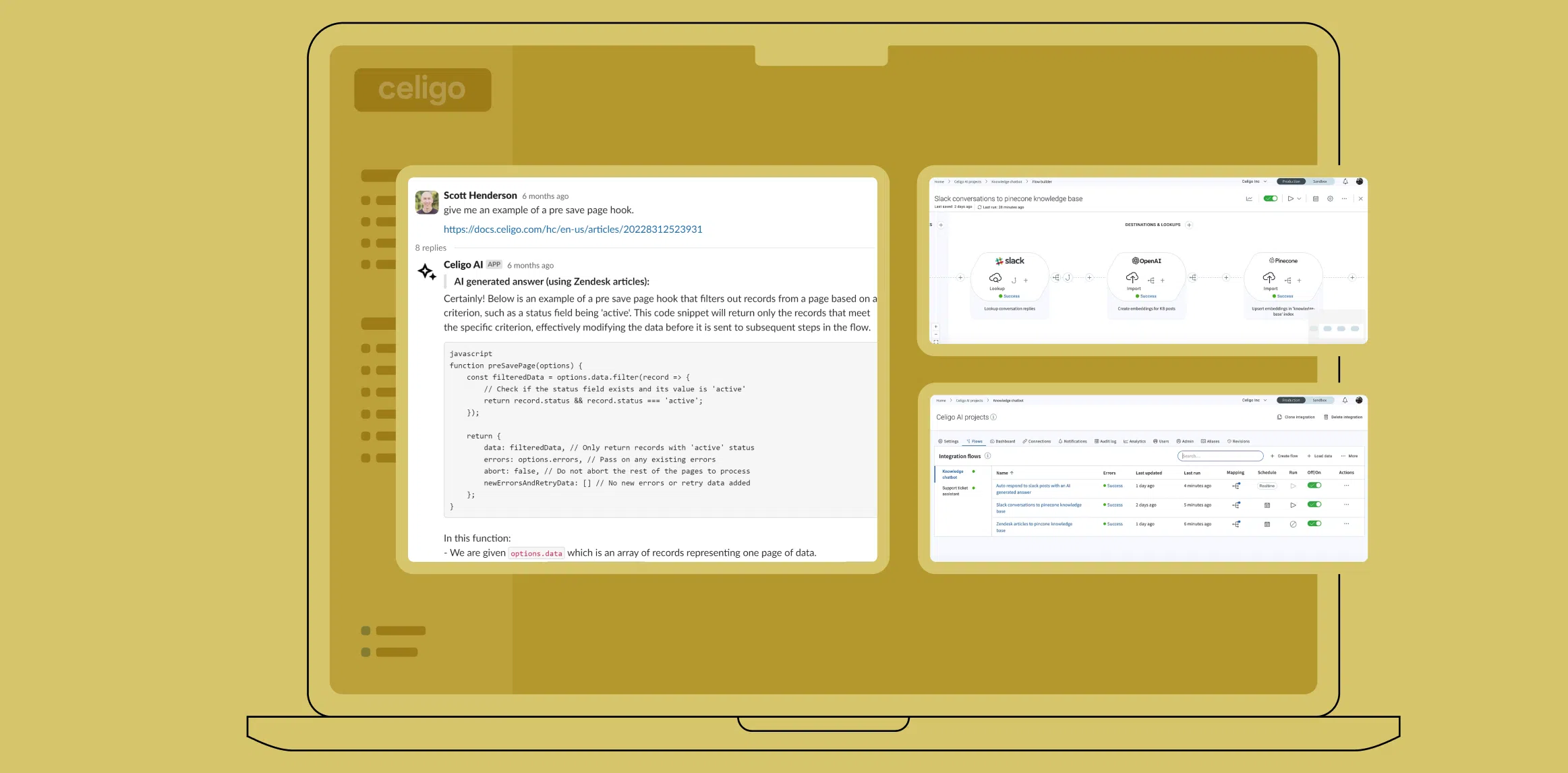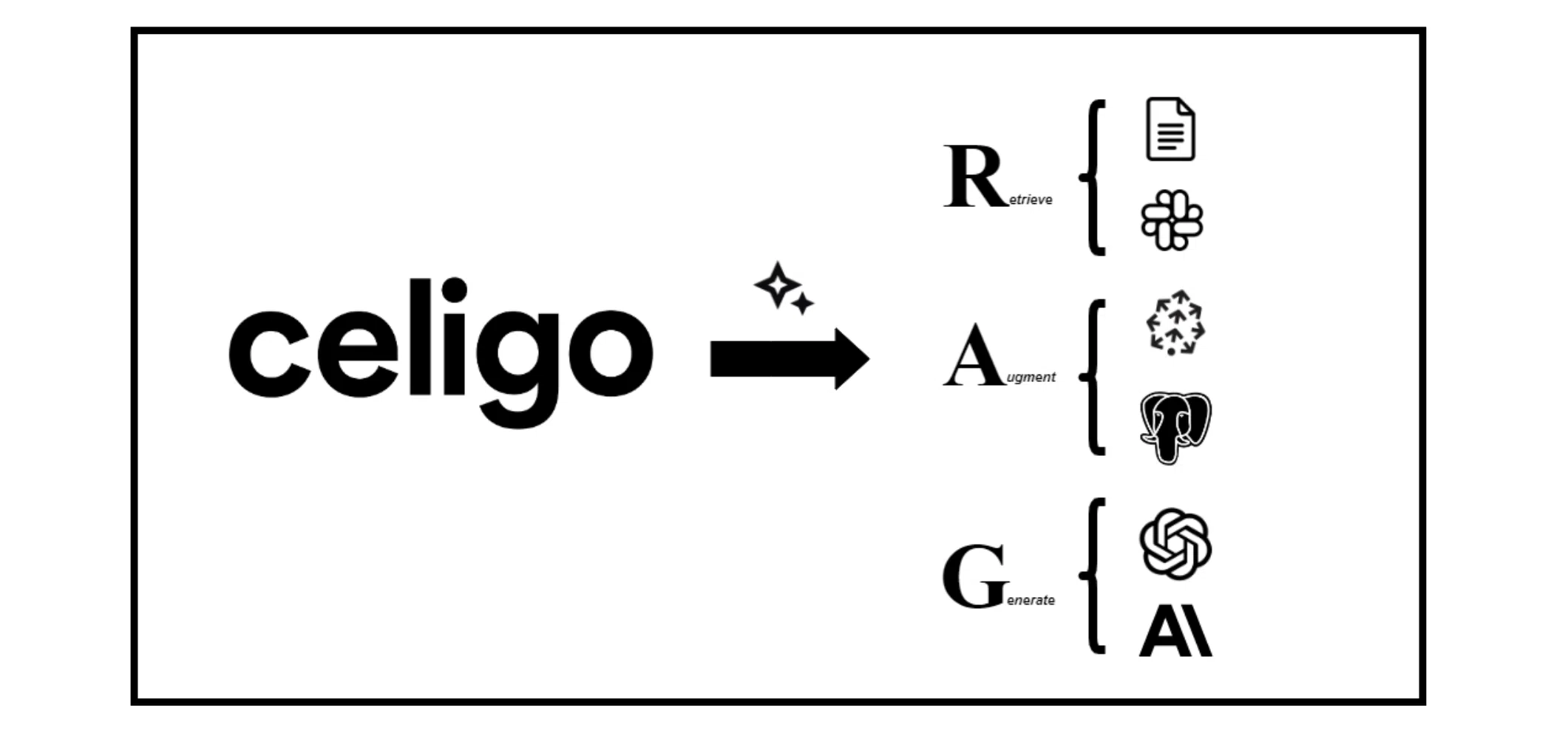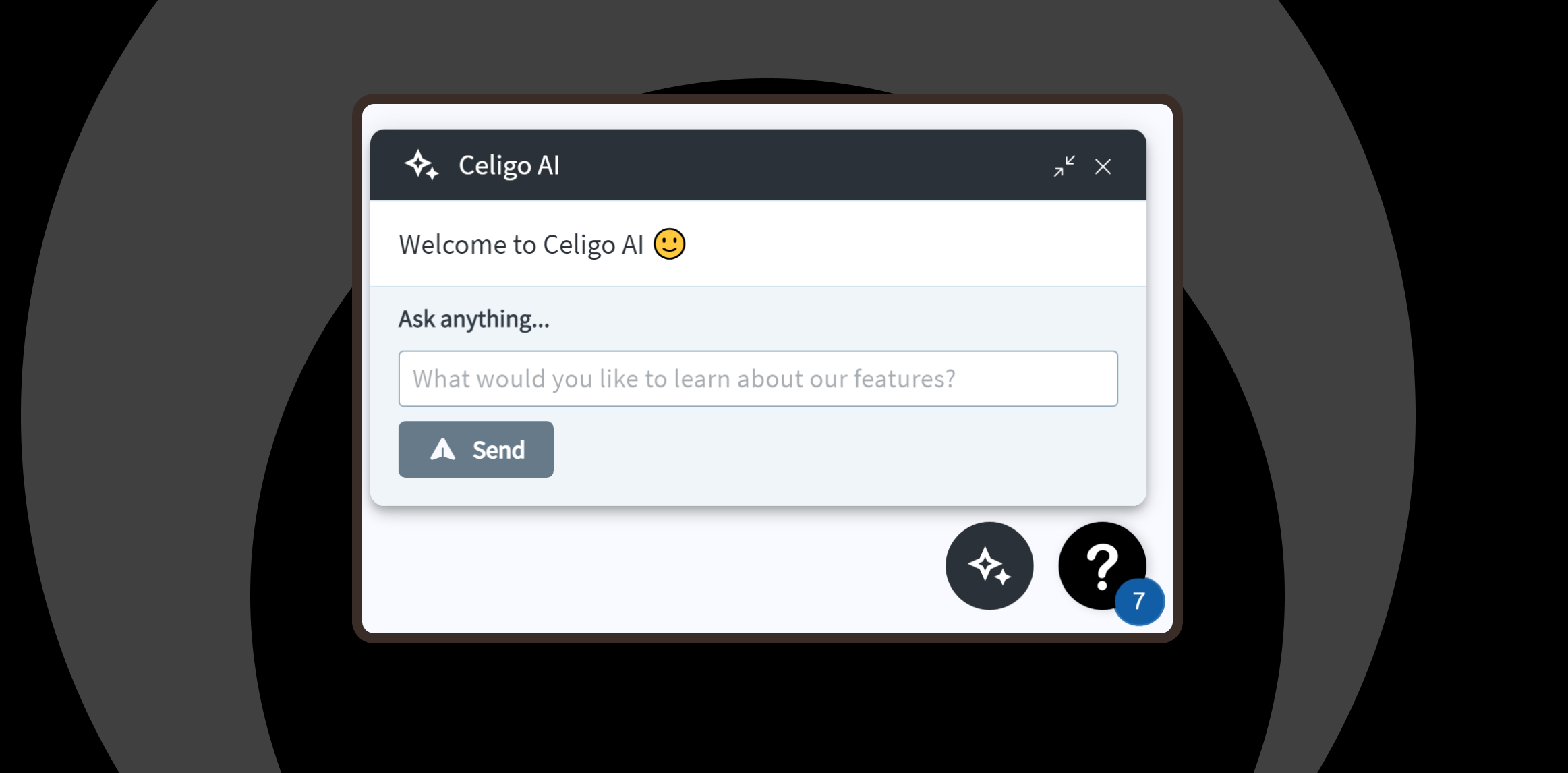Published Oct 16, 2023
Create an AI-Powered Chatbot

As businesses embarked on their digital transformation journeys, so did our pursuit of embedding AI into the Celigo platform. With AI integration at the heart of the Celigo Platform, we recognized the potential of AI to transcend being just a tool, envisioning it as a game-changer, a catalyst for innovation in the realm of iPaaS, capable of time and resource savings and unlocking unprecedented results for our customers.
At Celigo, we actively apply our multisource AI theory in our daily use of product knowledge. Our chatbot is an accurate knowledge bot that gathers insights from multiple sources. Here, we’ll explore a demo (presented by Scott Henderson, Celigo’s Chief Technology Officer) highlighting the capabilities of AI and an advanced integration platform as a service (iPaaS) in constructing an AI-driven chatbot within Slack.
This innovative solution demonstrates how AI can enhance the user experience and streamline communication processes. We’ve done it internally at Celigo and are here to teach you how to bring this powerful tool to your organization.
Watch the video demo:
Tapping into OpenAI
We are leveraging OpenAI’s GPT-3.5 Turbo, GPT-4 API, and their embeddings API. The flexibility and dynamic nature of GPT-3.5 Turbo allows for creating conversational AI experiences.
By leveraging this technology, the chatbot can provide accurate and contextually relevant responses to user queries.
Architecting the Chatbot Pipeline
The chatbot’s design is a meticulous process of structuring dialogues using system and user prompts. The system prompt sets the context and provides high-level instructions, while the user prompts gather specific information from the user. This approach ensures a smooth and interactive chatbot experience.
Query Resolution with External Data Repositories
One of the key features of the chatbot is its ability to handle user queries by referencing external sources. The chatbot can reference external data points and pull insights from resources like Zendesk articles and Slack threads. This integration amplifies the depth of responses and underscores the importance of real-time, accurate documentation.
Pinecone: Powering Similarity Searches
It’s not just about retrieving data; it’s about executing similarity searches on articles to extract the most relevant content. We’ve integrated Pinecone – a managed, cloud-native vector database, as a crucial component of the chatbot’s functionality. Pinecone enables the chatbot to perform similarity searches on articles and find relevant information.
By leveraging Pinecone’s capabilities, the chatbot can retrieve articles that closely match the user’s query, enhancing the accuracy and relevance of the responses.
Refining Chatbot Outputs
You can shape the chatbot’s responses to ensure they meet the desired format and style. Handlebars expressions can be used to format the responses dynamically. We employ handlebar expressions, allowing dynamic formatting, from bolding to italics, ensuring the chatbot’s outputs aren’t just accurate and aesthetically engaging.
This flexibility allows the chatbot to generate responses that are visually appealing and easy to understand.
Iterative Development in the OpenAI Playground
Continuous improvement is critical. We utilize the OpenAI Playground as a sandbox environment, enabling us to debug, preview, and finetune the chatbot’s functionalities, ensuring it remains at peak performance. This iterative approach allows continuous improvement and ensures the chatbot delivers accurate and reliable responses.
Slack Integration and Response Deployment
Our chatbot isn’t siloed; it’s fully integrated with Slack. Direct response broadcasting within Slack channels, coupled with Slack’s native text formatting tools, ensures that information is accessible but also clear and compelling.
This demo highlights the transformative potential of melding AI with iPaaS in chatbot development. By leveraging OpenAI’s GPT-3.5 Turbo, GPT-4 API,, integrating external sources, and utilizing tools like Pinecone and the OpenAI Playground, developers can create intelligent and interactive chatbot experiences. The seamless integration with Slack further enhances the user experience, making information readily accessible within the communication platform.
As AI continues to advance, the possibilities for chatbot development are endless. Embracing this technology can revolutionize communication processes and streamline information retrieval.
Try the Celigo platform to create an intelligent and interactive chatbot.




